Aim:
To determine the mass of two different objects using a beam balance.
Apparatus:
- Physical Balance
- Weight Box
- Sprit Level
- Two Objects with Different Mass
Theory :
A physical balance or Beam Balance is a weighing instrument that helps in measuring the weight (or gravitational mass) of an object by making use of the principle of moments. It consists of a metal beam B with a knife-edge at the centre pointing in the downward direction. The knife-edge rests on a horizontal flat top made of hard material (Brass). There are two edges with nuts n1 and n2 at the two ends of the metal beam. A pair of pans P1 and P2 are suspended through stirrups S1 and S2 respectively. The nuts n1 and n2 are used to adjust the weights of the pan. In the middle of the beam, there is a long pointer P pointing in the downward direction. This pointer moves on an ivory scale G fixed at the bottom of the brass pillar V. The pillar has two supports K1 and K2 which rests the metal beam when not in use. A knob H, at the bottom of the wooden box, is connected by a horizontal rod to the vertical pillar V. When the handle is rotated rightwards, the beam is raised and is ready to use. There are leveling screws W1 and W2 provided at the bottom of the box to make the pillar horizontal. The plumb line R suspended by the side of the pillar is given to confirm this. There are glass doors provided to the wooden box to avoid the air disturbance and to protect the balance from dust particles present in the air.
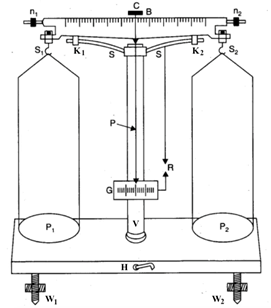
When the pans are empty, rotate the handle rightwards. The beam B will rise up and the pointer P will oscillate. If the oscillations are symmetrical about the central division of the ivory scale G, the balanced is under equilibrium state. By adjusting the nuts n1 and n2 ,the instrument can be made in the equilibrium state.
A physical balance determines the gravitational mass of a body by making use of the principle of moments. If the object O having gravitational mass m is placed on one pan and a standard mass O’ of know gravitational mass ms is placed on another pan to keep the beam horizontal, then,
Weight of the body O in one pan = Weight of the body O’ in another pan
or, mg = msg
where g is the acceleration due to gravity, which is constant. Thus,
m = ms
Procedure :
- Adjust the physical balance and make it horizontal with the help of spirit level and plumb line. When the beam is in raised position, the pointer C will stay at rest and coincide to the zero division or moves to and fro over the ivory scale G, equally, about the zero division.
- When the beam is in the rest position, put any one of the object in the left pan. Now put some standard weight with the help of a forceps from the weight box.
- Shut the front glass door so that air current should not disturb. Raise the beam with the help of handle H and notice that beam is horizontal and pointer is moving to and fro equally both sides of zero division.
- If, not, then put or remove some fractional weights to get the correct horizontal position of beam and pointer. Bring the beam in rest position and collect all the weight and add them which give the gravitational mass of the object. Now the remove the object also from left pan.
- Repeat 2, 3 and 4 for the second object.
Observation:
Table 4.1 Mass of the objects
| Sl. No | Object | Weight in gm x | Weight in milligram y | y in gm | Total Weight (x + y) gm |
| 1 | |||||
| 2 |
Result:
The mass of the first object is ……………….. gm.
The mass of the second object is ……………. gm.
Precautions :
- Pans must be clean and tidy.
- The base should be made horizontal using the levelling screw.
- While adding or removing weights, the beam should be at rest.
- The body to be weighed should be placed in the left pan weight added to the right pan.
- The beam should be raised or lowered gently to avoid damage to the knife-edge.
- Masses should always be added in the descending order of magnitude. Masses should be placed in the centre of the pan.
- The balance should not be loaded with masses more than capacity. Usually, a physical balance is designed to measure masses upto 250 g.
- Weighing of hot and cold bodies using a physical balance should be avoided. Similarly, active substances like chemicals, liquids and powders should not be kept directly on the pan.
Reference:
- http://www.ncert.nic.in/
- https://www.learncbse.in/
You may check out our blog on SPHEROMETER EXPERIMENT
About Labkafe: Lab Equipment Manufacturer & Exporter
We are a School laboratory furniture and Lab equipment manufacturer and supplier. In laboratory furniture for school, we first design the entire laboratory room keeping in mind the requirements as per affiliation CBSE Bye-Laws. Also, we take care of the complete designing and installation of laboratory furniture.
In the lab equipment section, we have a wide range of glassware, chemicals, equipment and other lab accessories. Most of them are available for order online on our website but some of them can be procured on demand.
If you have need:-
- laboratory equipment or lab furniture requirements for school
- composite lab equipment list for school
- Physics lab equipment list for school
- Chemistry lab equipment list for
- Biology lab equipment list for school
- Pharmacy lab equipment
do drop a message through chat or mail us at [email protected] or call +919007218364 and we’ll get in touch with you.
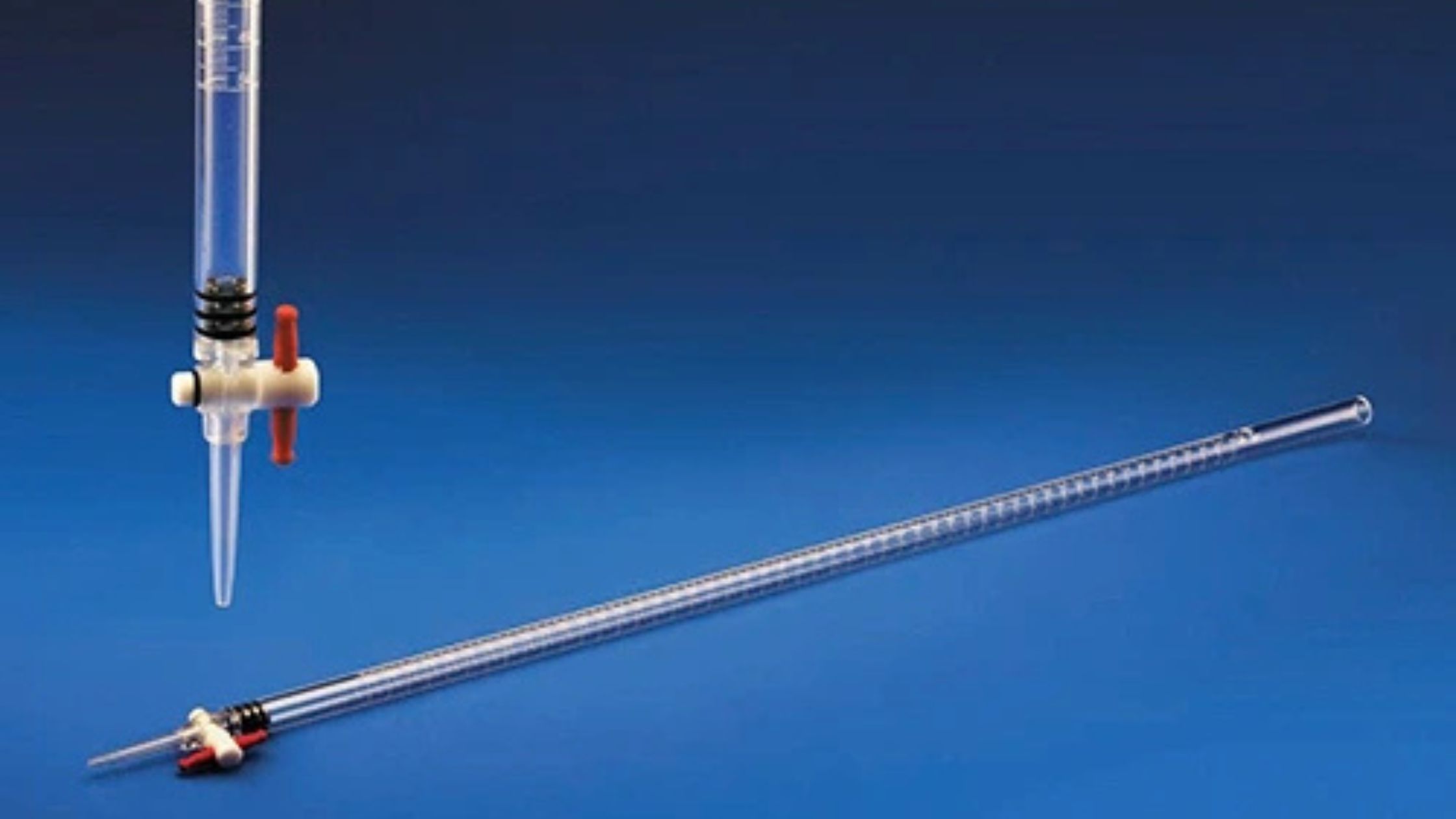
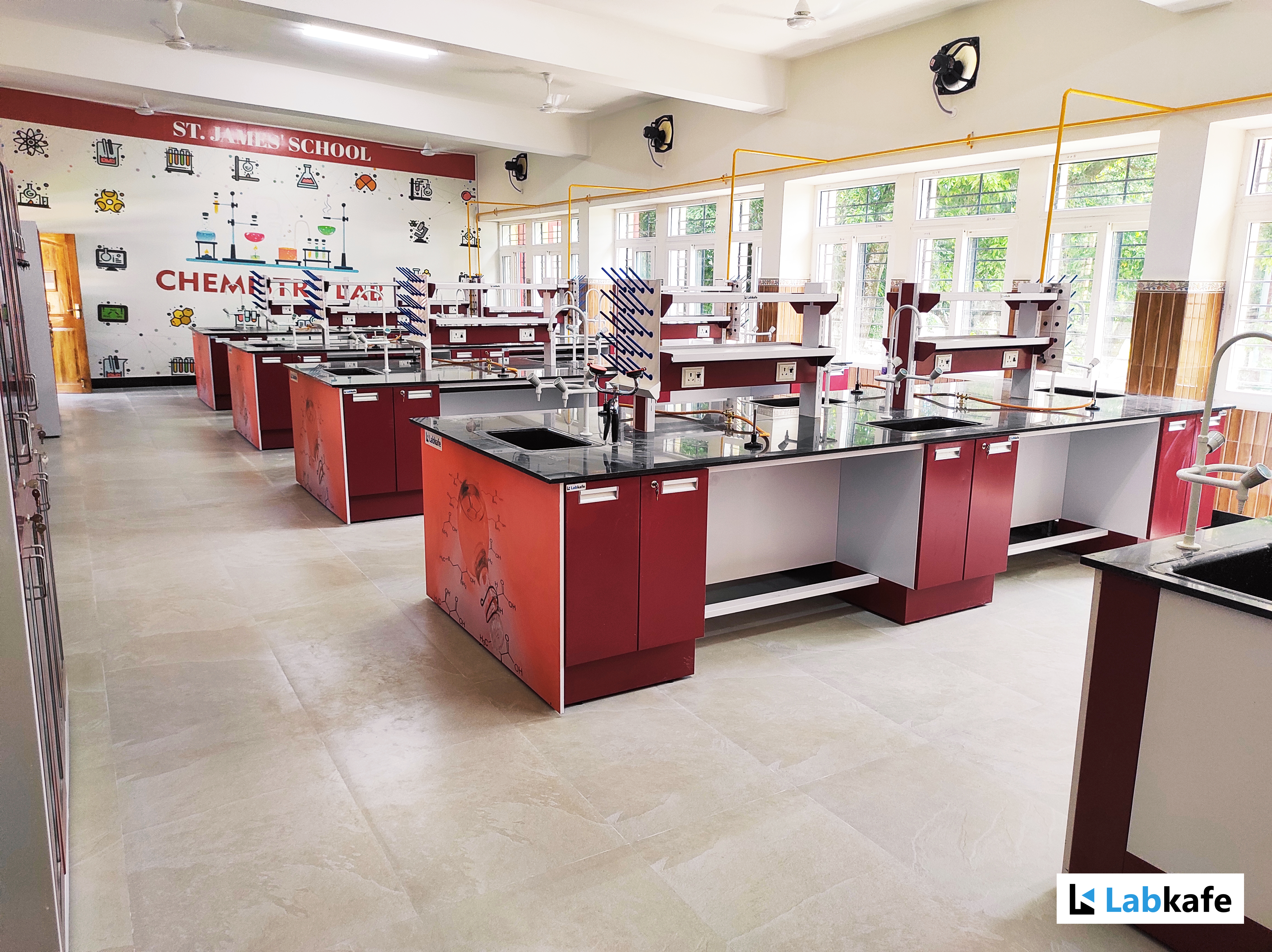

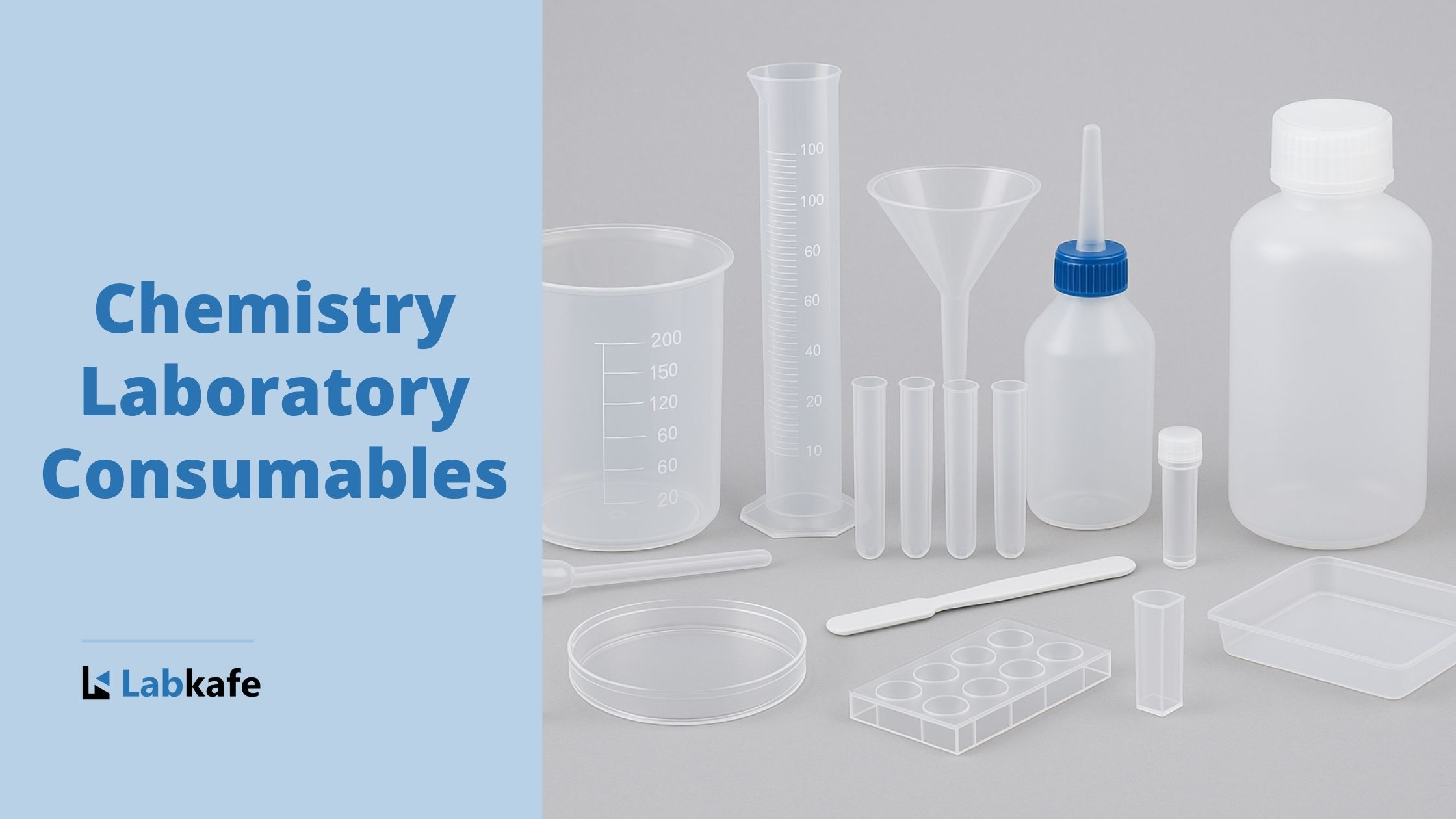
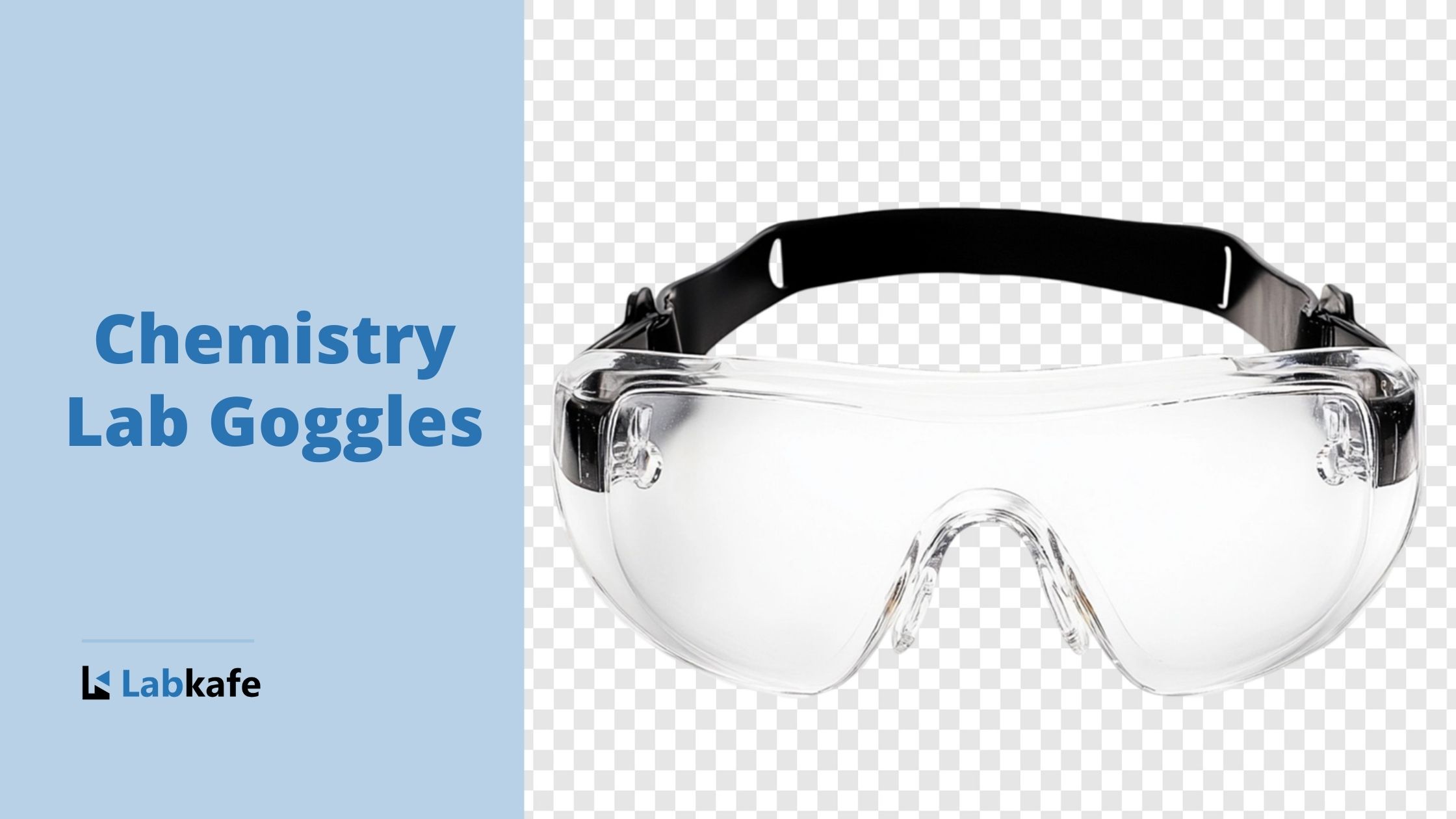
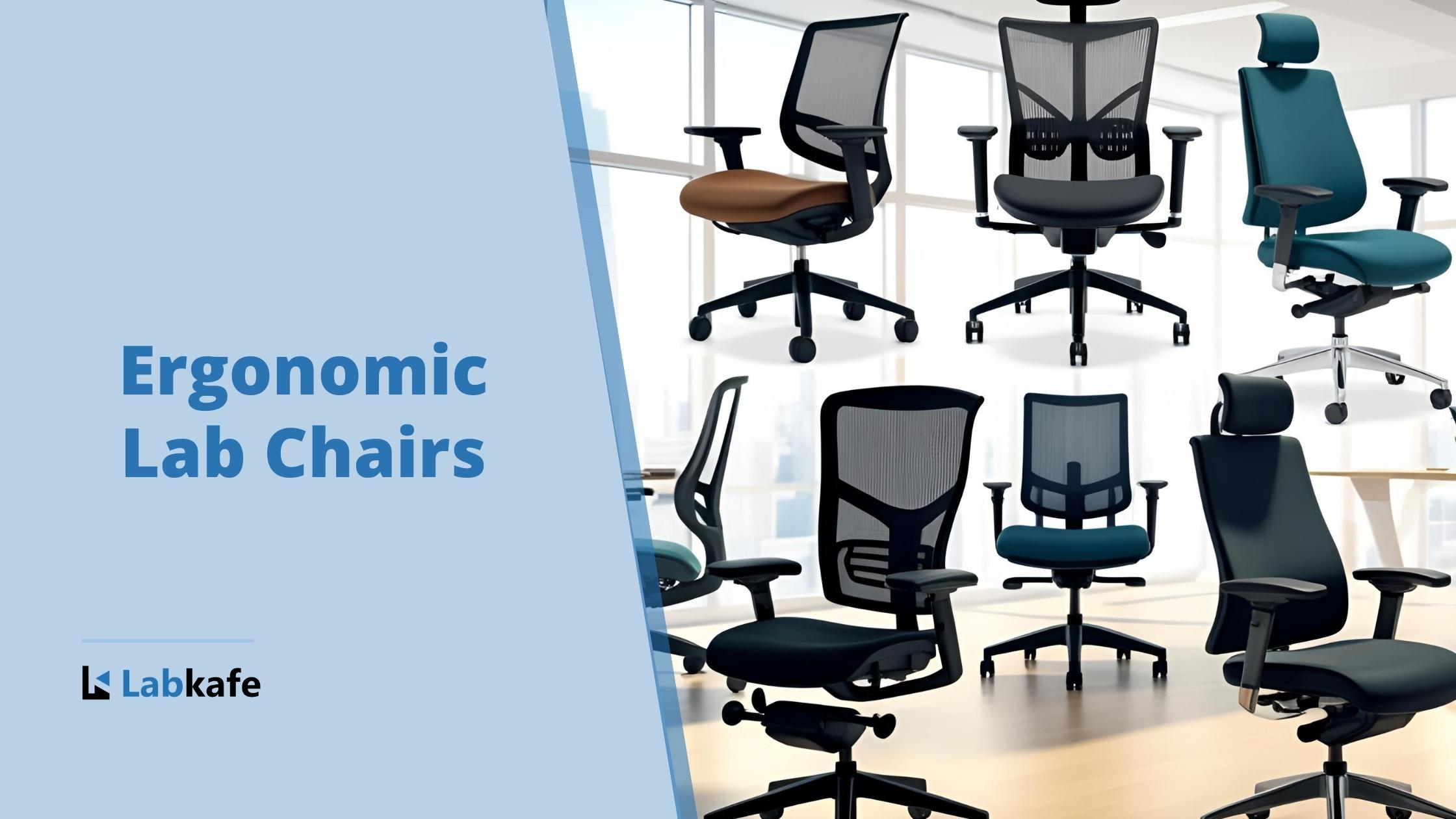






Leave a Reply